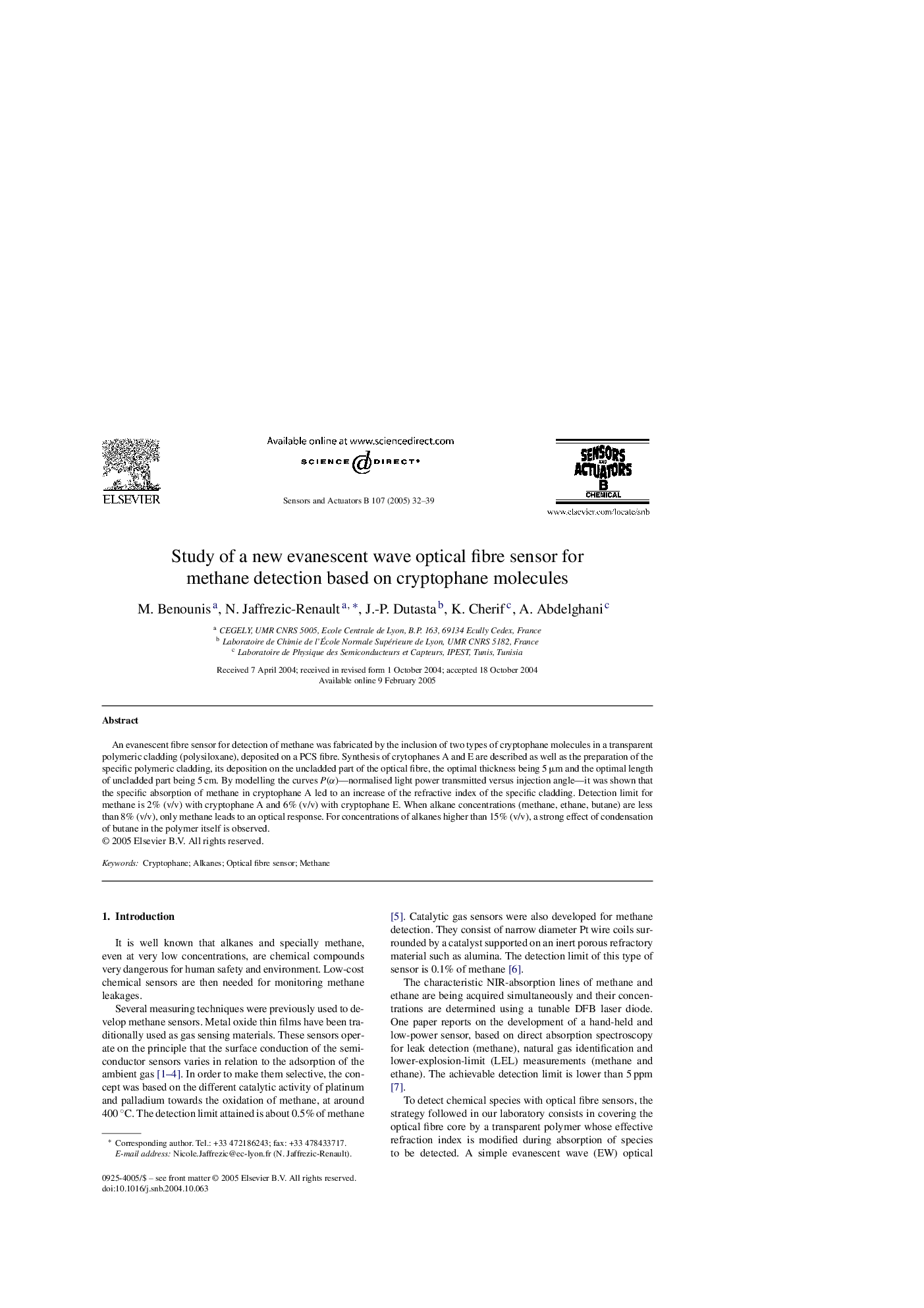| Article ID | Journal | Published Year | Pages | File Type |
|---|---|---|---|---|
| 10410320 | Sensors and Actuators B: Chemical | 2005 | 8 Pages |
Abstract
An evanescent fibre sensor for detection of methane was fabricated by the inclusion of two types of cryptophane molecules in a transparent polymeric cladding (polysiloxane), deposited on a PCS fibre. Synthesis of crytophanes A and E are described as well as the preparation of the specific polymeric cladding, its deposition on the uncladded part of the optical fibre, the optimal thickness being 5 μm and the optimal length of uncladded part being 5 cm. By modelling the curves P(α)-normalised light power transmitted versus injection angle-it was shown that the specific absorption of methane in cryptophane A led to an increase of the refractive index of the specific cladding. Detection limit for methane is 2% (v/v) with cryptophane A and 6% (v/v) with cryptophane E. When alkane concentrations (methane, ethane, butane) are less than 8% (v/v), only methane leads to an optical response. For concentrations of alkanes higher than 15% (v/v), a strong effect of condensation of butane in the polymer itself is observed.
Related Topics
Physical Sciences and Engineering
Chemistry
Analytical Chemistry
Authors
M. Benounis, N. Jaffrezic-Renault, J.-P. Dutasta, K. Cherif, A. Abdelghani,
